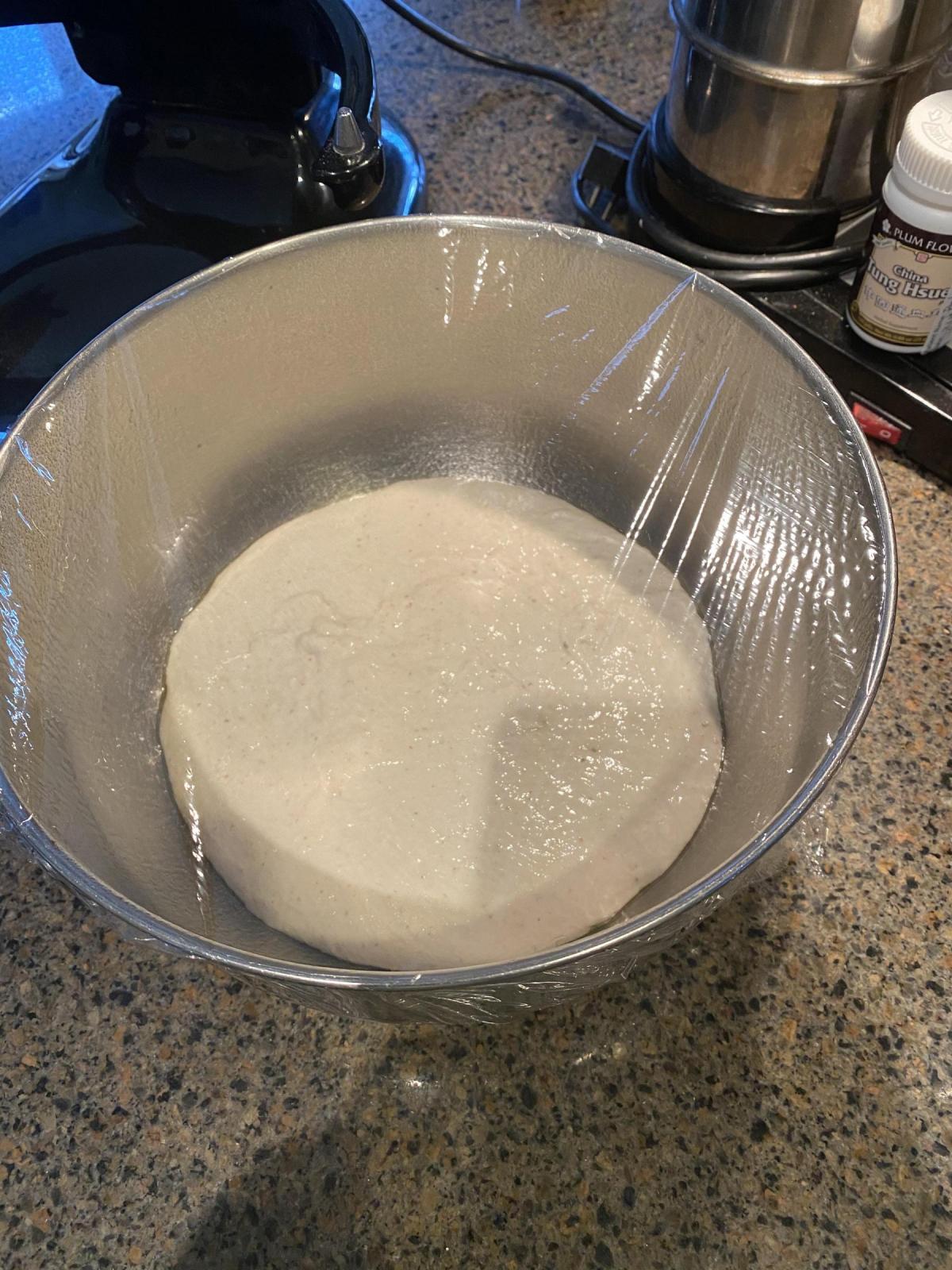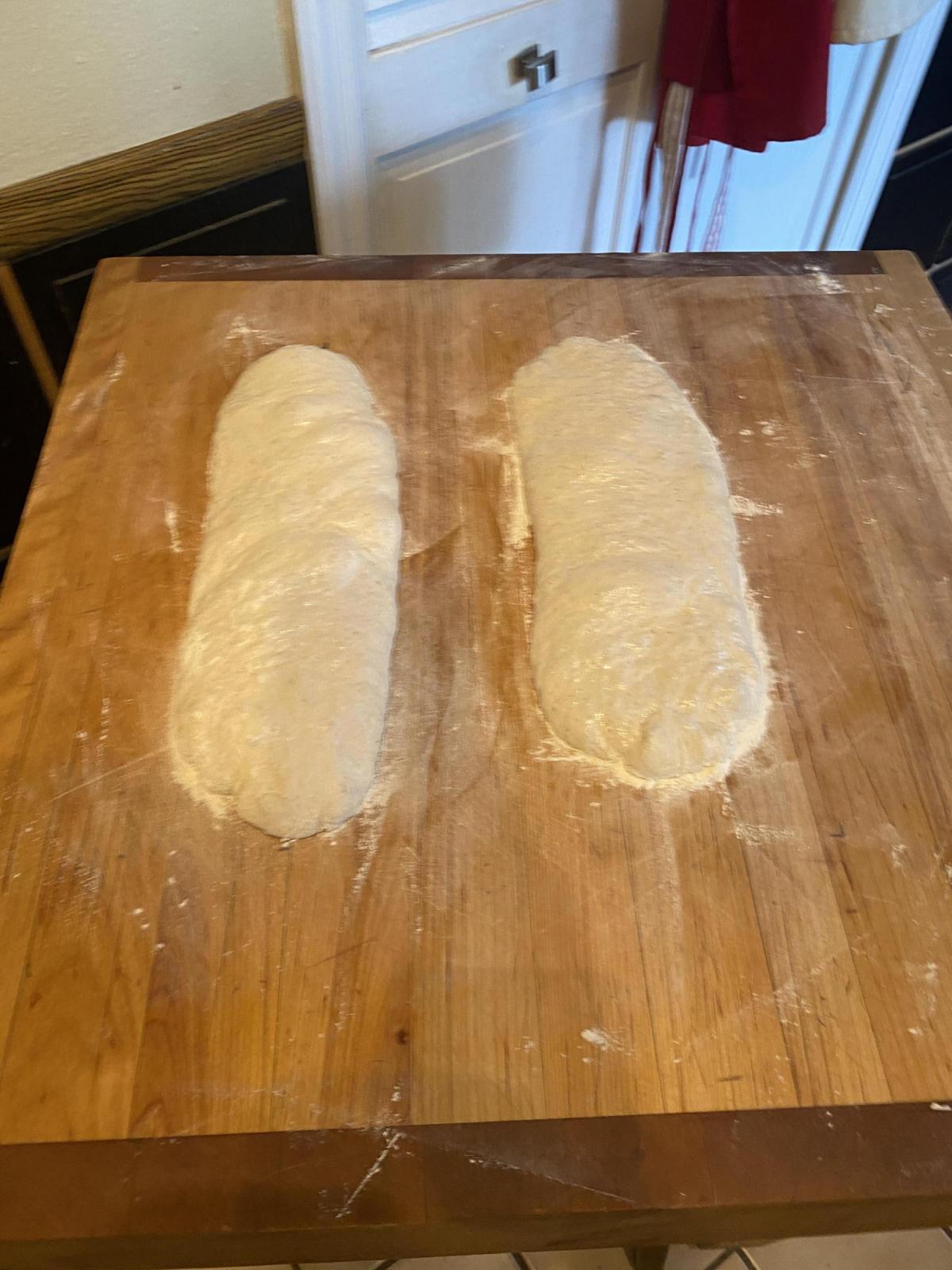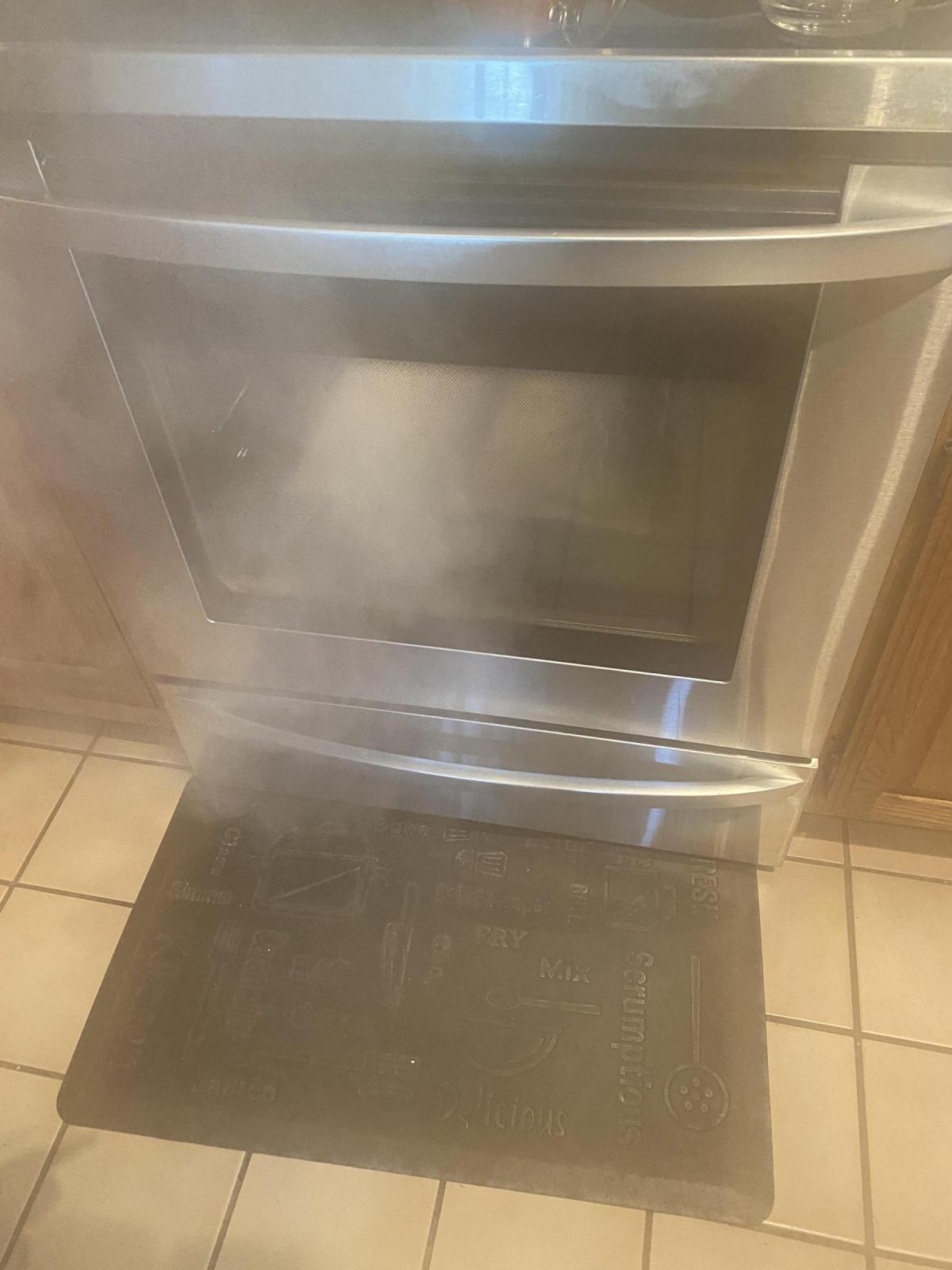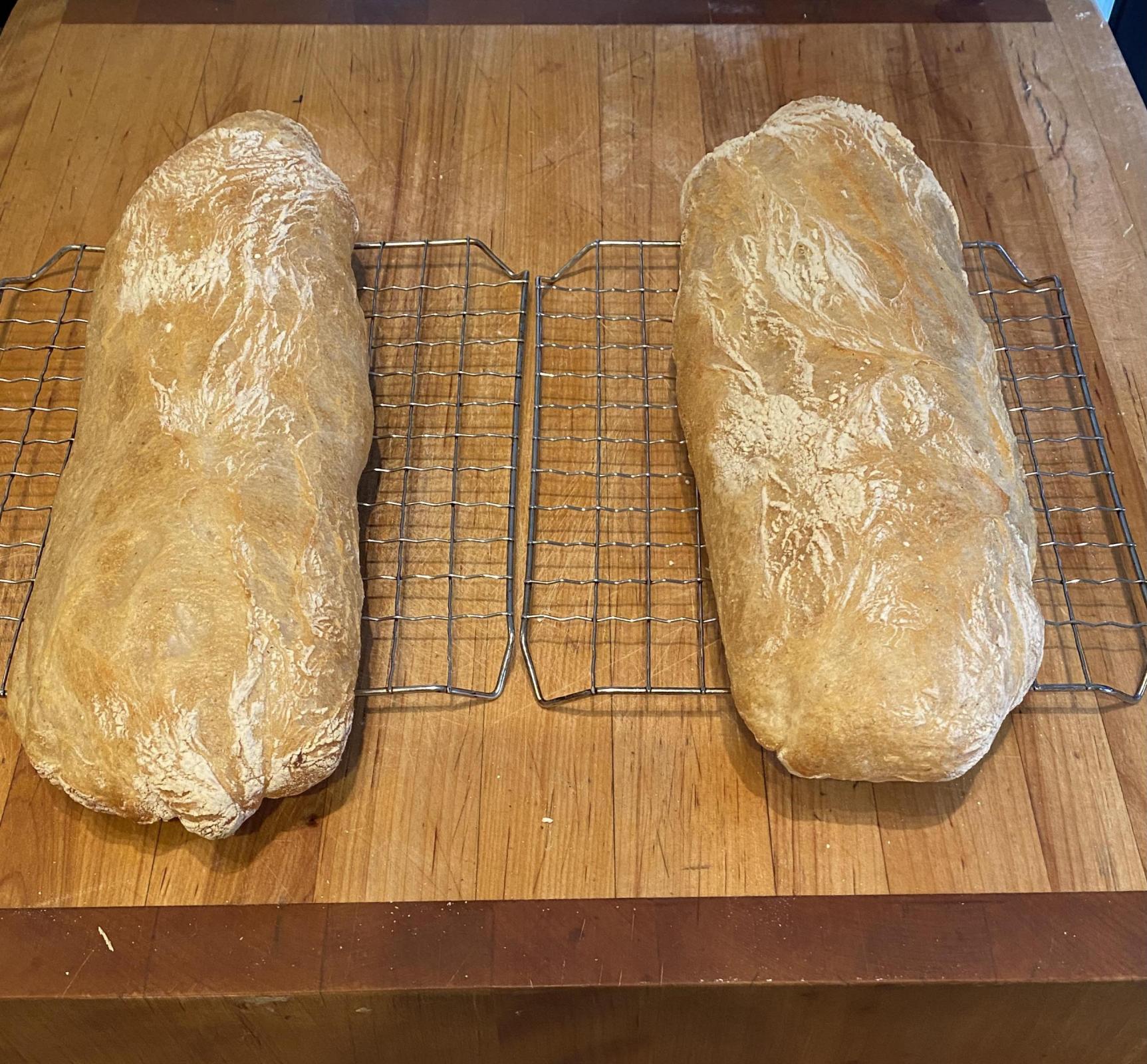Inspired from Jasons Quick Ciabatta, (I've made dozens and dozens of times), I started experimenting with my discard. I've made Ciabatta using Peter Reinharts Biga, Poolish, Jasons Quick Ciabatta, to name a few. Jasons is nice because it's quick, but lacks flavor. Peters is nice because it nails the flavor but takes much time. (Something that's not available to me anymore) This is the best of both worlds.
When time ran short, I still maintained a twice a day feeding schedule of The Darwin Starter, but was unable to use him proper and consequently, my discard started to get out of control. Thinking about Peters Poolish/Biga, I dumped 200 grams of Darwin into my mixing bowl, knocked off 100 grams each of flour and water from Jasons Ciabatta and used warm water to offset the chill from The Darwin.
Mixing The Darwin, flour and yeast with a plastic bowl scraper then slowly incorporating the water, letting it autolyse for 15 minutes, adding the salt then aggressively mixing it, has proved to be the most efficient way for me to make this. It took 10 minutes of mixing with the paddle on 6, then another 2 minutes with the dough hook on 6 to have it ready to proof. This is where you need to be patient. I don't go so much by double or triple as I'm using a bowl and can't tell how much it's risen. What I do look for is a big,bubbly mess of slop that almost looks alive in the bowl. At this point The fun begins.
There is no "Iron Fist Velvet Glove" phase in this bake as frankly, I have no desire to fondle this mess. I don't want to Degas the dough. So I use a bench knife to shape and after a 45 minute rise, I place parchment paper next to the loaf and use my bench knives to "flip" the dough on the parchment paper. Slide my peeler under the paper, load it on the steel and 20 minutes later, it's done.
The oven is set up for steam, pictures below. I preheat it at 550 deg and after I load it, drop it to 500 deg. After 10 minutes, I pull my steam pans out, turn the loafs 180 deg and drop the oven to 450.
From start to finish is between 4-5 hours and is without a doubt the best tasting ciabatta I've ever had, let alone made. Think lazy mans Poolish. (or time challenged)
200g 100% Hydration (Liquid) Discard
400g KABF
375g Warm Water 95-100deg
2 tsp. Instant yeast
15g Salt
1. In mixer bowl, add discard, flour and yeast. Lightly mix discard and flour with a spoon until discard is well mixed in.
2. Mixing on "Stir" add 1/2 the water and mix until incorporated. Add a bit more water, mix until incorporated. Do this in increments until all the water is incorporated and you have a wet mess.

3. Autolyse, (let sit) for 15 minutes.
4. Stir in the salt with the mixer on low. Once incorporated, crank it up to 6. In about 10 minutes, it will start pulling away from the sides and gathering up on the paddle. Switch to the dough hook and with it on 6, mix another 2 minutes or until it starts climbing the hook and pulling away from the sides.


Once it pulls away from the sides, "Pour the dough into a bowl sprayed with oil". And by pour, I mean literally pour the dough into the bowl. Cover with plastic and wait about 2.5 hours.

5. After roughly 2.5 hours or when your dough looks like it's alive,

Pour this living thing onto a well floured surface, being careful not to de-gas it.
Divide into 2 pieces and shape with an oiled bench knife. There is no need to touch the dough with your hands, simply split the dough and shape it using the bench knife into two loafs. (or 4 smaller loafs)

Scrape the excess flour up under the loafs,

flour the loafs well and cover loosely for about 45 minutes.
6. In the meantime, setup your oven with a steam pan or two and your steel/stone and preheat as high as it will go. Mine preheats to 550 for 45 min - 1 hr.

7. Sprinkle Corn Meal or Semolina on the top of the loafs and using a couple of Bench Knifes, flip the loafs onto some Parchment paper. (The top is now the bottom) Gently reshape the loafs by pressing and dragging the bench knife alongside the loafs)

Load the loafs onto your Peel

Slide onto your steel/stone, pour hot water into your steamer pan and drop the oven temp to 500 deg.

After 10 minutes, open the door, rotate the loafs 180 degrees, (I use a couple of gloves and handle the loafs directly, it's faster), drop the temp down to 450 degrees and give it another 10 minutes ish.
Put on a rack and cool.

Cool and Slice to serve.

Hope you enjoy this, I certainly do. :)